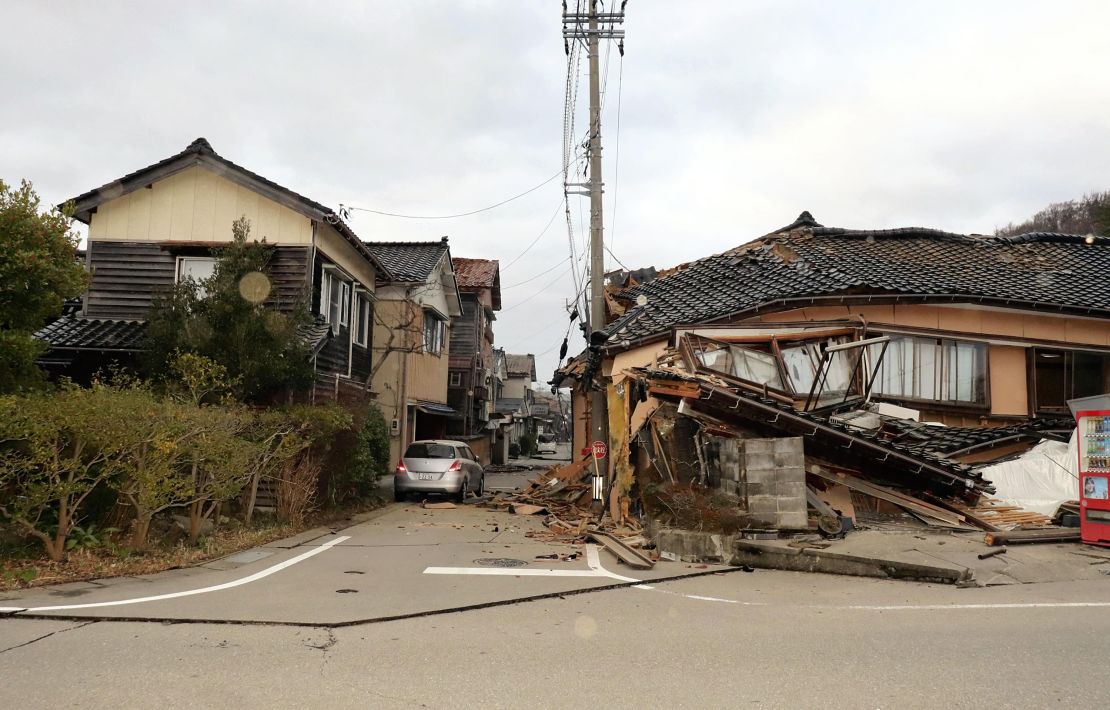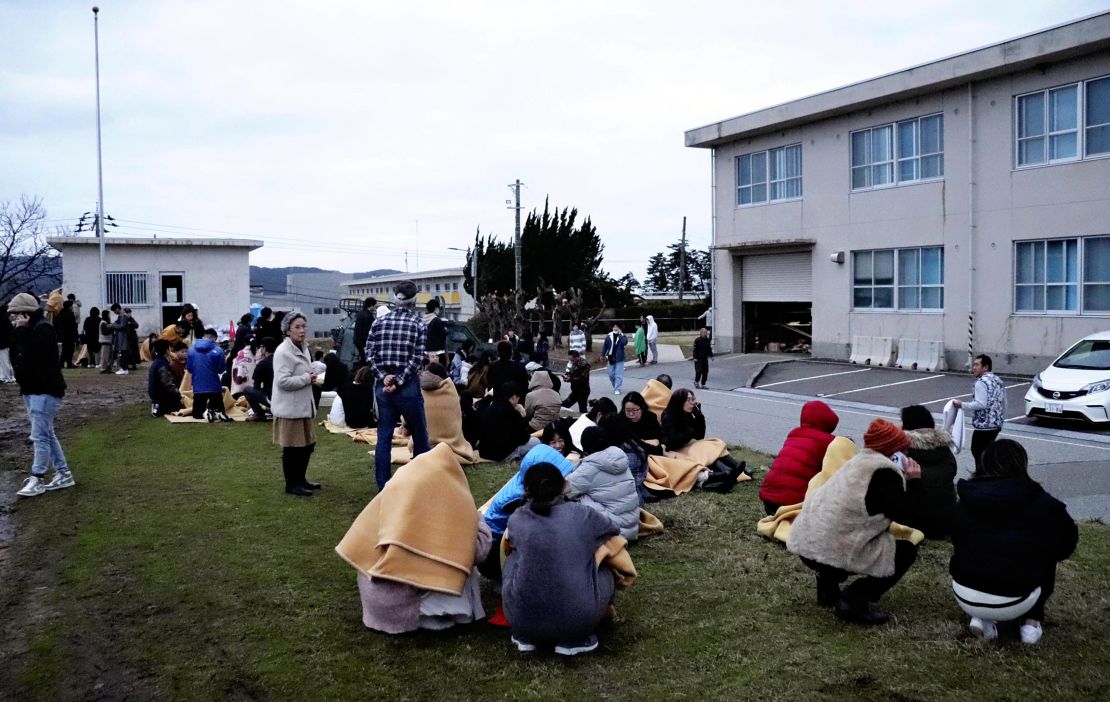TOKYO (CNN) – A formidable 7.5-magnitude earthquake rocked western Japan on Monday afternoon, unleashing a tsunami alert and prompting authorities to issue evacuation orders for coastal regions. The seismic event occurred at 4:10 p.m. local time at a depth of 10 kilometers (6 miles), approximately 42 kilometers (26 miles) northeast of Anamizu in Ishikawa prefecture, as reported by the United States Geological Survey (USGS).
Japan Meteorological Agency swiftly issued tsunami warnings for the western coastal areas, with initial waves hitting the shore just over 10 minutes after the earthquake. Reports from Wajima in Ishikawa prefecture indicated tsunami waves of around 1.2 meters (3.9 feet) at 4:21 p.m., according to Japanese public broadcaster NHK, with no immediate reports of damage.
A major tsunami warning remained in effect for the city of Noto in Ishikawa prefecture, where waves of up to 5 meters were anticipated, according to the Japan Meteorological Agency. Chief Cabinet Secretary Yoshimasa Hayashi, in a televised address, urged residents in tsunami-prone areas to evacuate to higher ground.
NHK’s footage depicted intense shaking as waves battered the coastline in Ishikawa prefecture, resulting in building collapses and other structural damage.

In the aftermath, images circulated on social media showcased collapsed roofs and shaken foundations of houses. Store aisles were strewn with goods, and footage from inside a train captured intense rocking of platform signs during the tremor.
Over 32,500 homes in Ishikawa prefecture were left without power, according to Hokuriku Electric Power. Kansai Electric reassured the public that no abnormalities were reported at nuclear plants in the affected area.
The powerful quake triggered a series of strong aftershocks, as reported by USGS. At 4:18 p.m. local time, a 6.2-magnitude aftershock occurred southwest of Anamizu, followed by tremors of 5.2 magnitude 58 kilometers away and a 5.6-magnitude aftershock closer to the epicenter.
Prime Minister Fumio Kishida assured reporters at his official residence that the government would provide timely and accurate information to the public.

Reports indicated waves of less than a meter along Japan’s western coast, categorized under “tsunami advisory.” Larger waves of 80 centimeters in Toyama city, 40 centimeters in Kashiwazaki and Kanazawa port, and 20 centimeters in Tobishima and Sado islands were reported.
The South Korean Meteorological Administration monitored possible sea level changes in specific coastal areas, while a tsunami threat was declared in eastern Russian cities facing the Sea of Japan. Evacuations had not been reported at the time of this breaking story, with updates expected.


